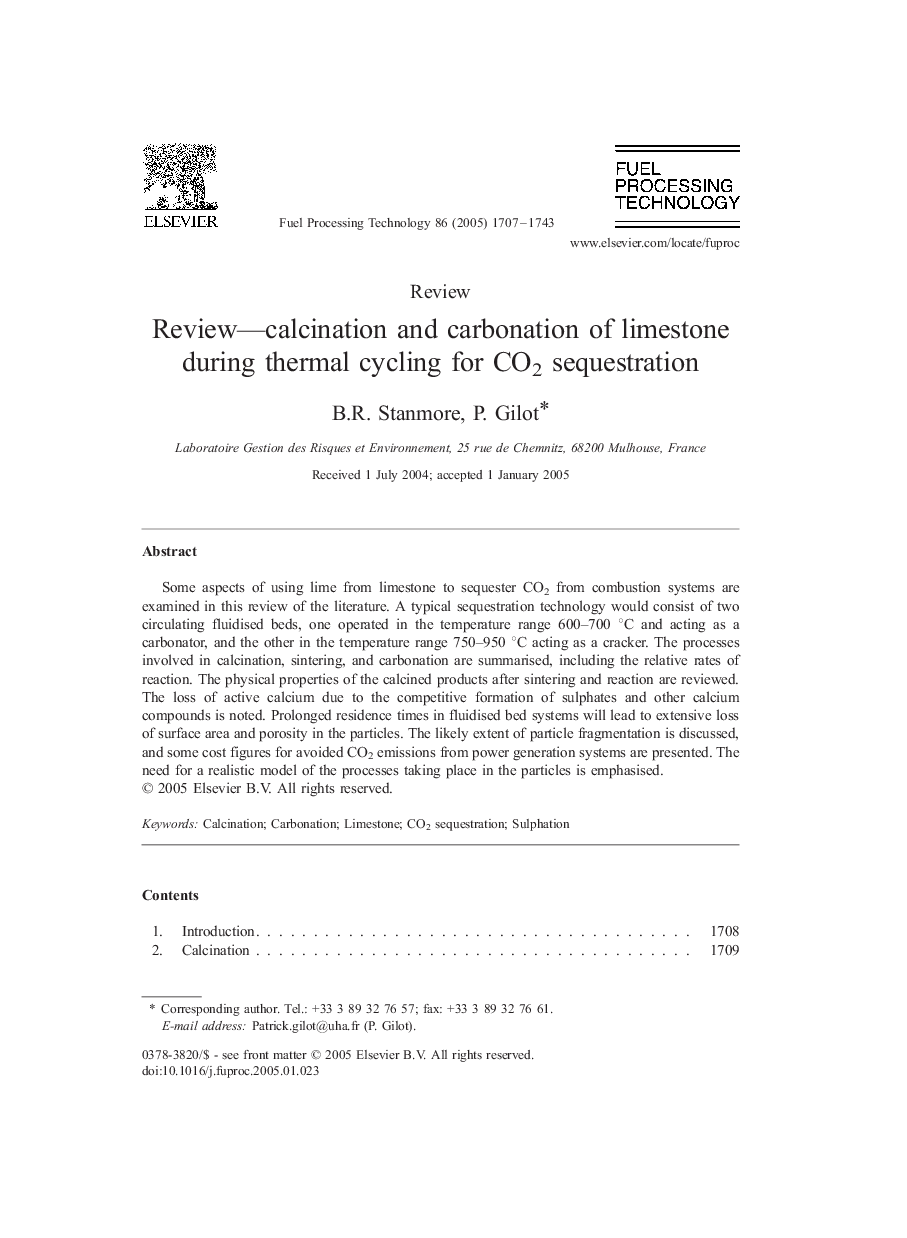| Article ID | Journal | Published Year | Pages | File Type |
|---|---|---|---|---|
| 10274873 | Fuel Processing Technology | 2005 | 37 Pages |
Abstract
Some aspects of using lime from limestone to sequester CO2 from combustion systems are examined in this review of the literature. A typical sequestration technology would consist of two circulating fluidised beds, one operated in the temperature range 600-700 °C and acting as a carbonator, and the other in the temperature range 750-950 °C acting as a cracker. The processes involved in calcination, sintering, and carbonation are summarised, including the relative rates of reaction. The physical properties of the calcined products after sintering and reaction are reviewed. The loss of active calcium due to the competitive formation of sulphates and other calcium compounds is noted. Prolonged residence times in fluidised bed systems will lead to extensive loss of surface area and porosity in the particles. The likely extent of particle fragmentation is discussed, and some cost figures for avoided CO2 emissions from power generation systems are presented. The need for a realistic model of the processes taking place in the particles is emphasised.
Related Topics
Physical Sciences and Engineering
Chemical Engineering
Chemical Engineering (General)
Authors
B.R. Stanmore, P. Gilot,
